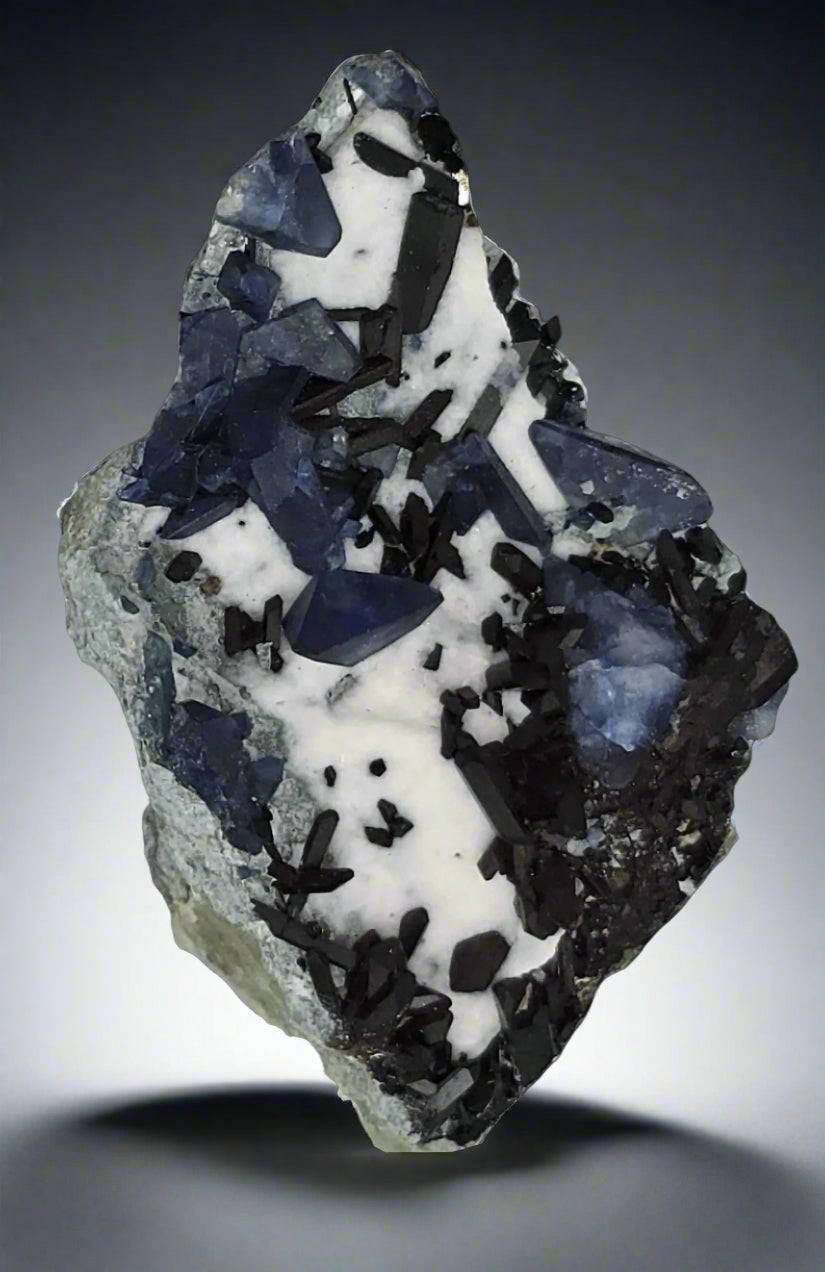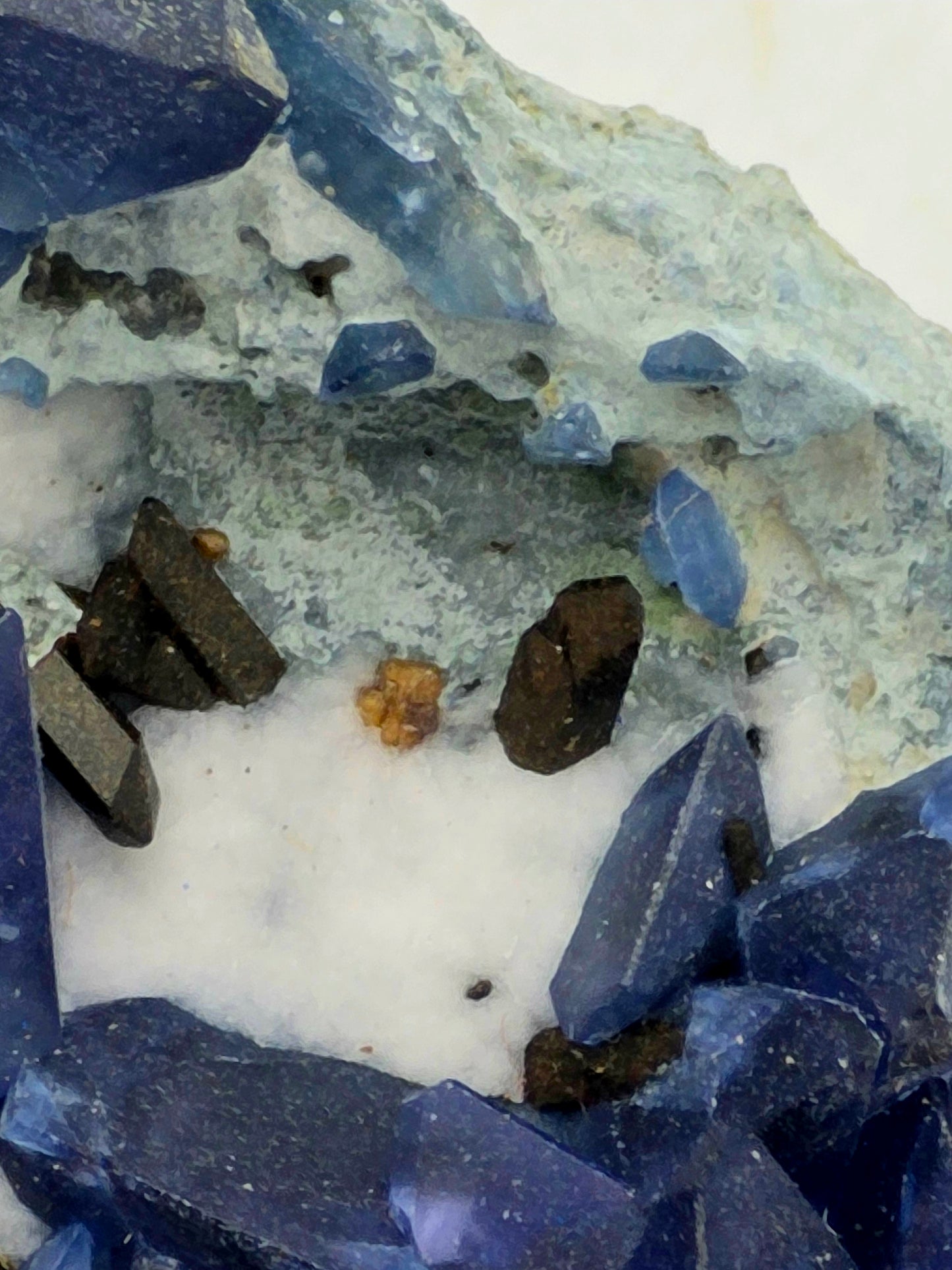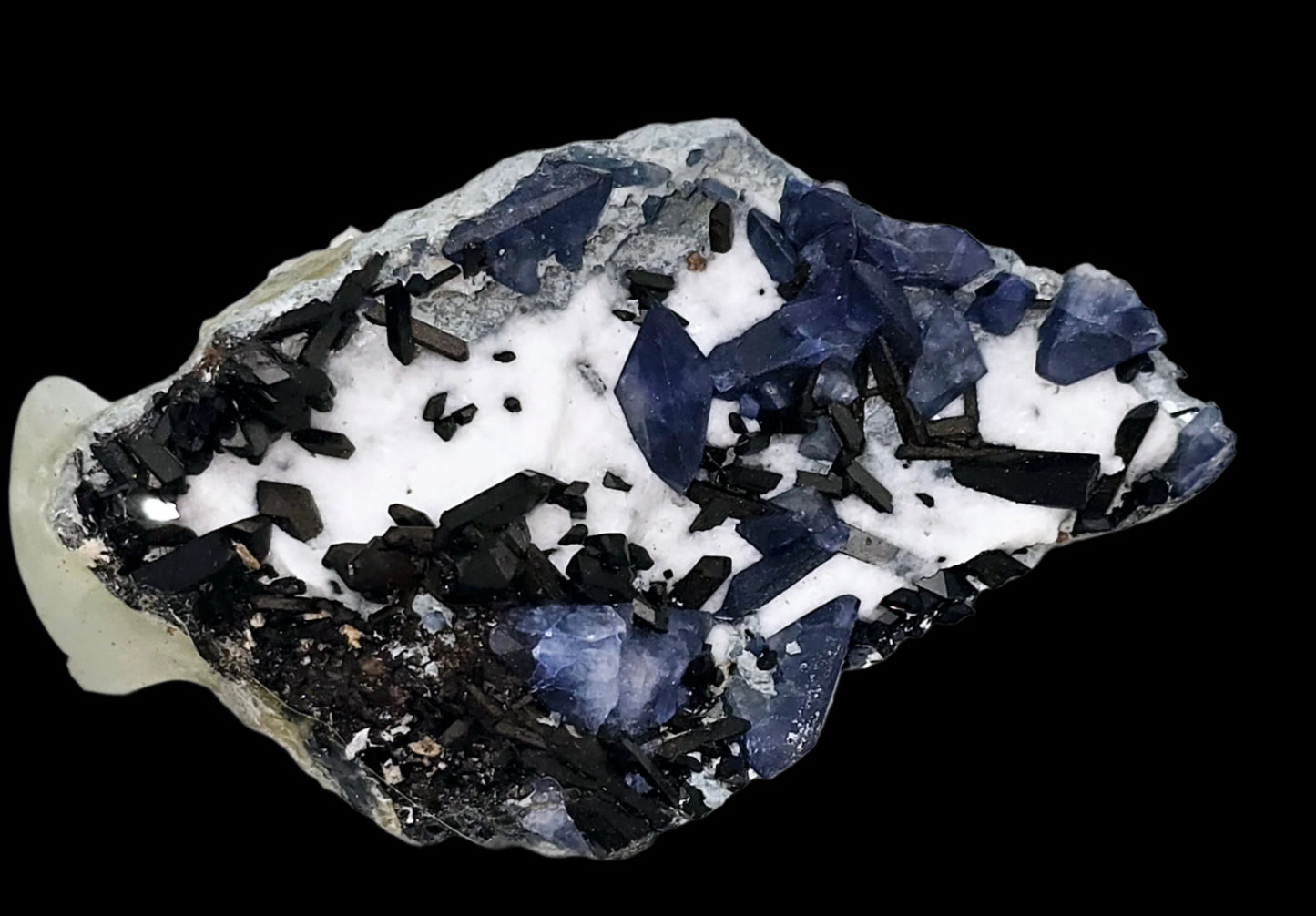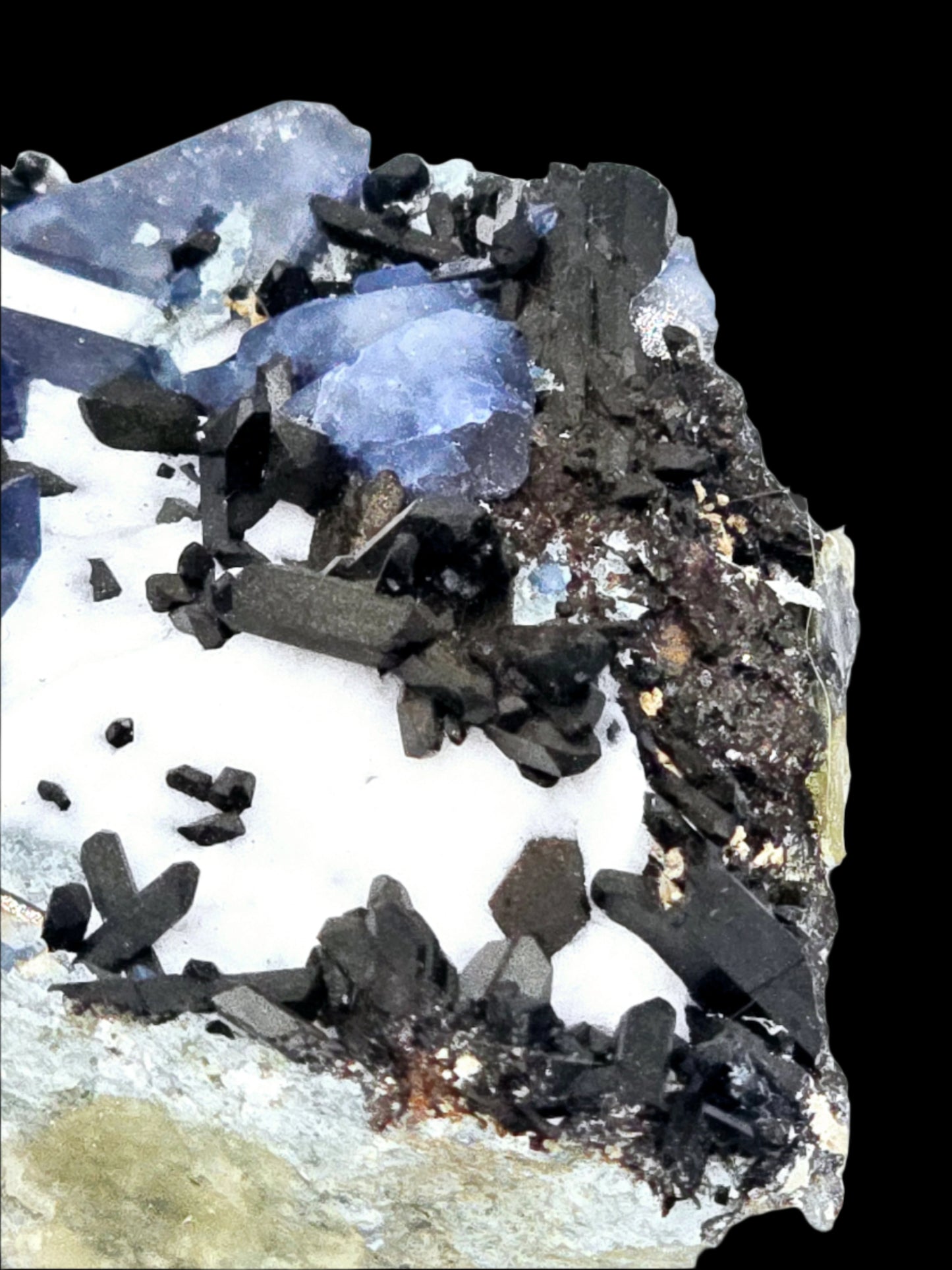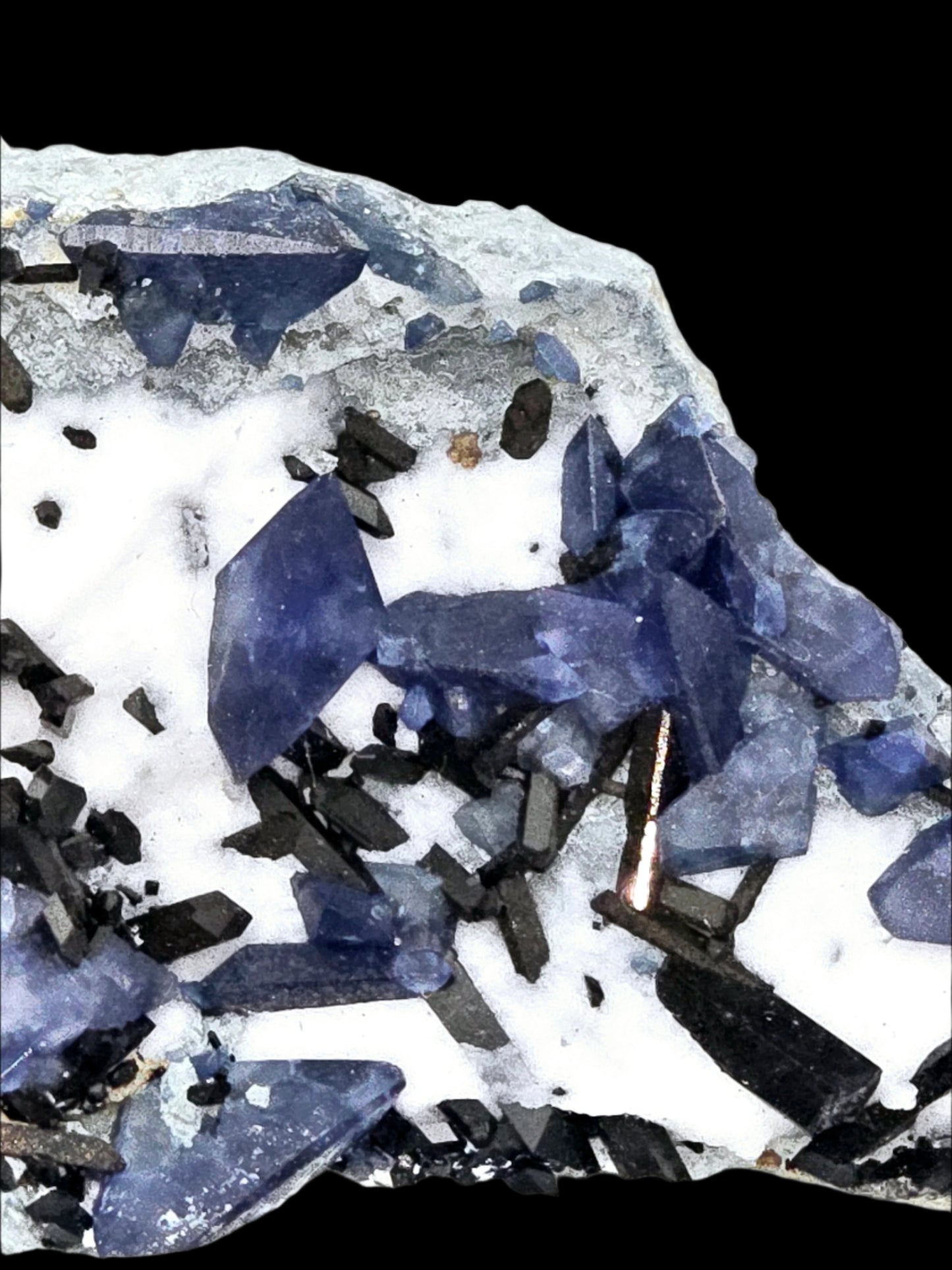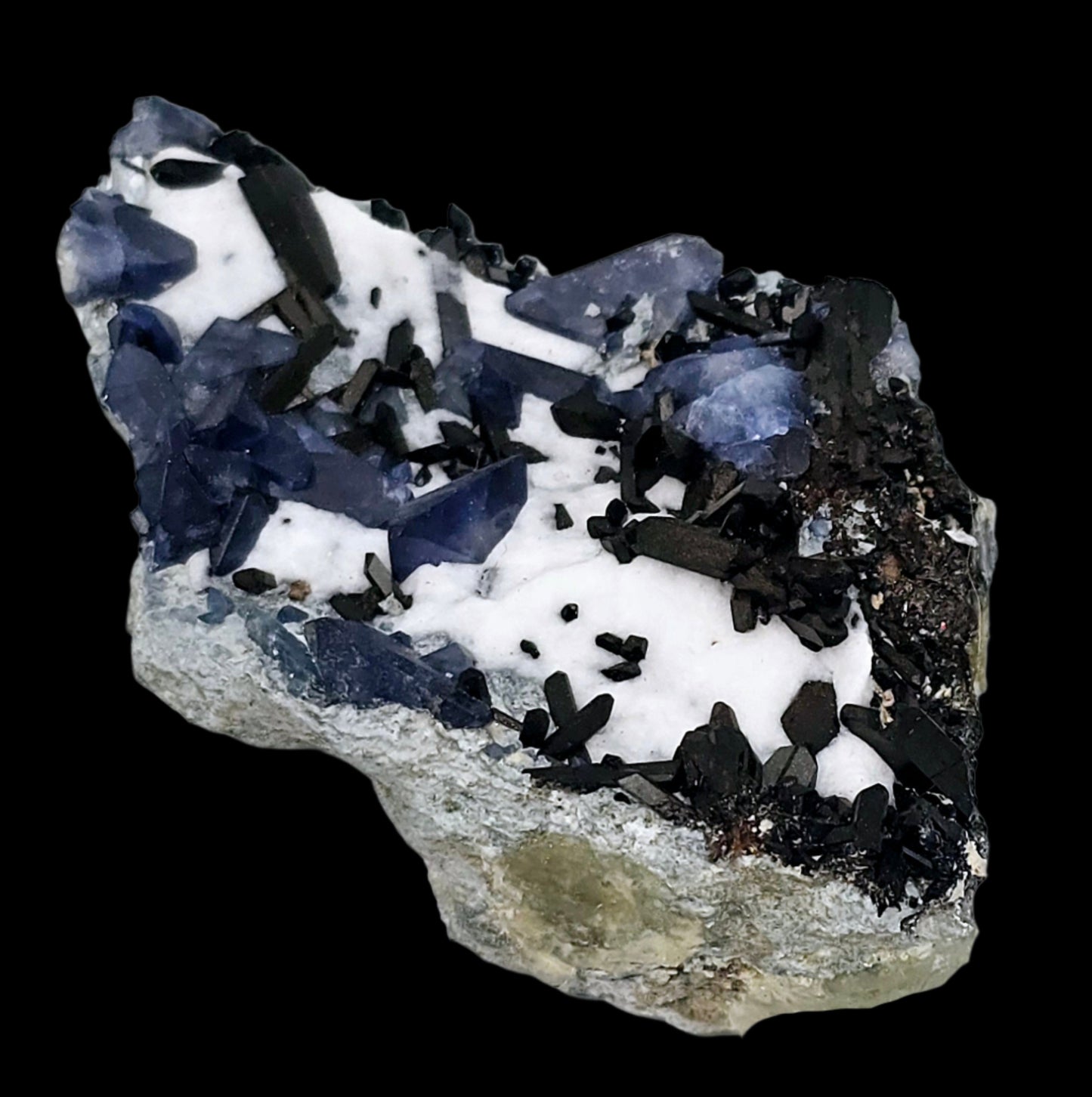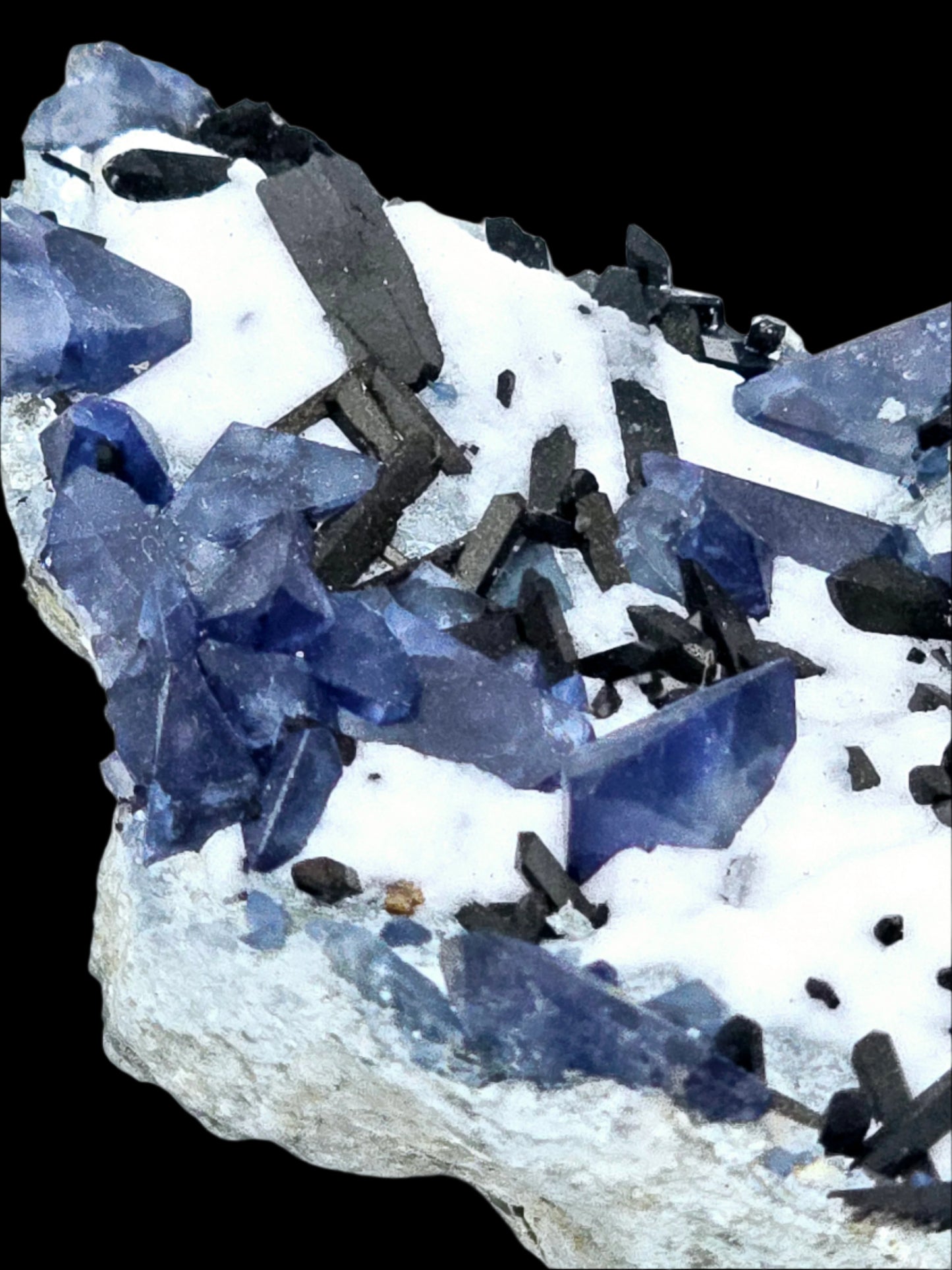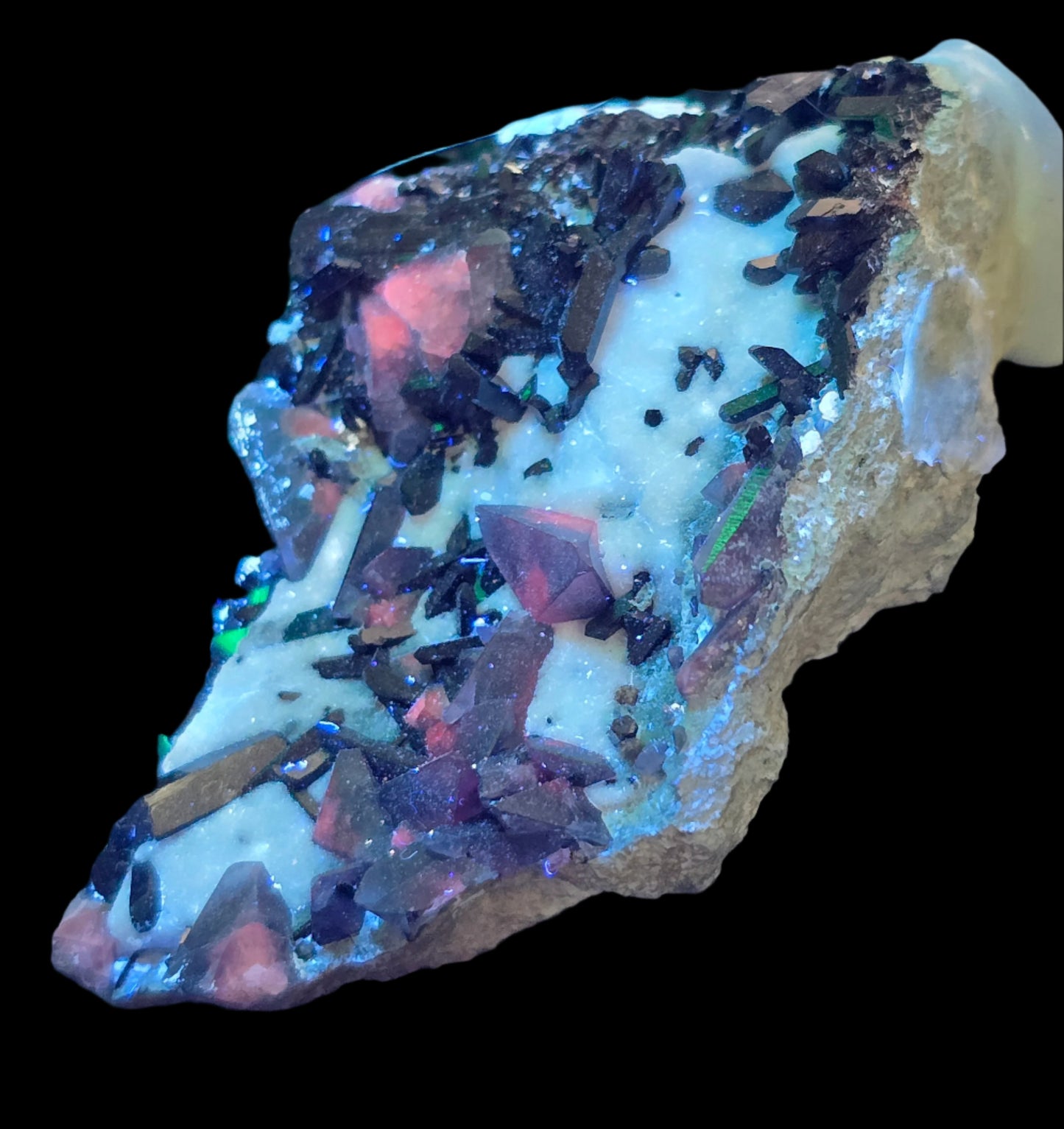CRYSTALS2COLLECT A.C.N 651.525.727 Pty Ltd
BENITOITE (BLUE), NEPTUNITE (BLACKISH RED), JOAQUINITE (BROWN) on NATROLITE (WHITE) (miniature)
BENITOITE (BLUE), NEPTUNITE (BLACKISH RED), JOAQUINITE (BROWN) on NATROLITE (WHITE) (miniature)
Couldn't load pickup availability
Benitoite, BaTi(Si3O9), is an extremely rare blue mineral composed of barium titanium cyclosilicate, primarily located in hydrothermally altered serpentinite. It forms in the high-pressure, low-temperature conditions characteristic of subduction zones at convergent plate boundaries. Under short-wave ultraviolet light, benitoite fluoresces a bright blue to bluish white, while the less common clear to white crystals exhibit a red fluorescence under long-wave UV light.
Discovered in 1907 by prospector James M. Couch in the San Benito Mountains of California, it was initially mistaken for sapphire due to its color. In 1909, Dr. George D. Louderback at the University of California, Berkeley, identified it as a new mineral, naming it benitoite after the nearby San Benito River. While benitoite is found in various locations worldwide, high-quality gemstones have only been sourced from the Benito Gem Mine in California. Other occurrences have been noted in Montana, Arkansas, Japan, and Australia, but these specimens are generally smaller and considered accessory minerals. In 1985, benitoite was designated as California's official state gem. The mineral typically crystallizes in a hexagonal structure, with non-gem varieties occasionally exhibiting a rare six-pointed twinned form.
Neptunite is a silicate mineral characterized by the chemical formula KNa2Li(Fe2+, Mn2+)2Ti2Si8O24. It forms a series with mangan-neptunite as manganese content increases, while watatsumiite is a variant where vanadium substitutes titanium in the structure. First identified in 1893 from the Narssârssuk pegmatite in West Greenland, neptunite is also located in natrolite veins within glaucophane schist in San Benito County, California, as well as in Mont Saint-Hilaire, Quebec, and the Kola Peninsula in Russia. The mineral derives its name from Neptune, the Roman god of the sea, due to its connection with aegirine, which is linked to Àgir, the Scandinavian sea deity.
Joaquinite, with the chemical formula (Ce), NaBa2Ce2FeTi2[Si4O12]2O2(OH,F) · H2O, is an exceptionally rare silicate mineral that contains cerium and exhibits a honey-yellow to brown hue along with a vitreous luster. It was named in 1909 by G.D. Louderback and W.C. Blasdale, referencing the Joaquin Ridge in the Diablo Range, the site of its discovery, which also borders the San Joaquin Valley. The name reflects its cerium content, a designation added by Nickel & Mandarino in 1987.
Natrolite is a mineral species classified as a tectosilicate and is part of the zeolite group. Its chemical composition is represented by the formula Na2Al2Si3O10·2H2O, indicating it is a hydrated sodium and aluminum silicate. The mineral was first identified in Hohentwiel, Hegau, Germany, which serves as its type locality.
The term "natrolite" was introduced by Martin Heinrich Klaproth in 1803, deriving from the Greek words for soda (natron) and stone (lithos), reflecting its sodium content. Informally, it is also known as needle stone or needle-zeolite, a reference to the slender, acicular crystals that often form in divergent clusters. These crystals can frequently exhibit epitaxial overgrowths of natrolite, mesolite, and gonnardite in various arrangements.
Shipping & Returns
Shipping & Returns
Dimensions
Dimensions
Share
Image with text
Pair text with an image to focus on your chosen product, collection, or blog post. Add details on availability, style, or even provide a review.
-
Free Shipping
Pair text with an image to focus on your chosen product, collection, or blog post. Add details on availability, style, or even provide a review.
-
Hassle-Free Exchanges
Pair text with an image to focus on your chosen product, collection, or blog post. Add details on availability, style, or even provide a review.









